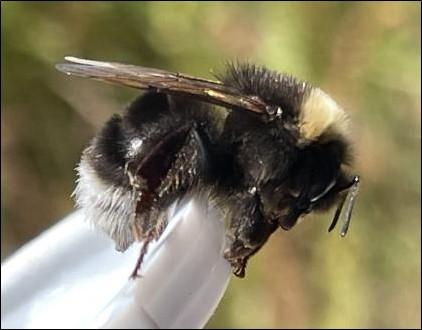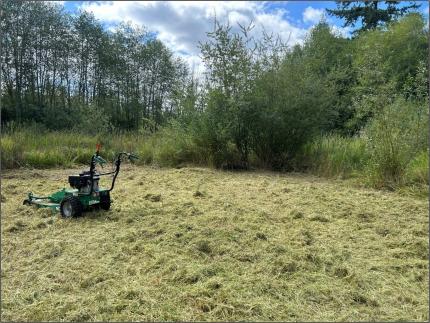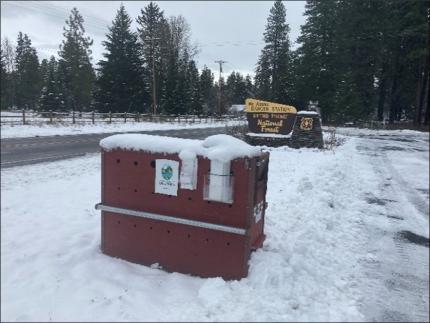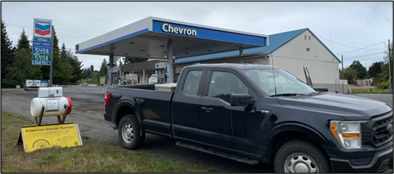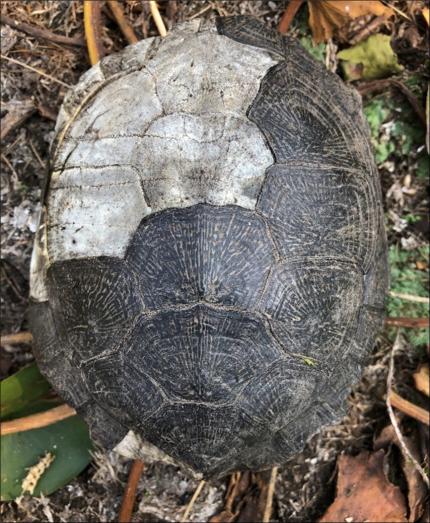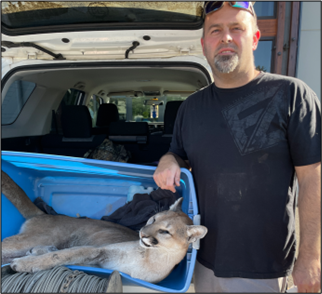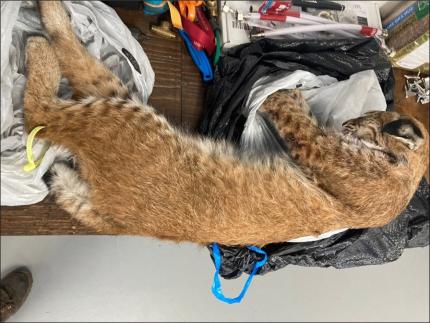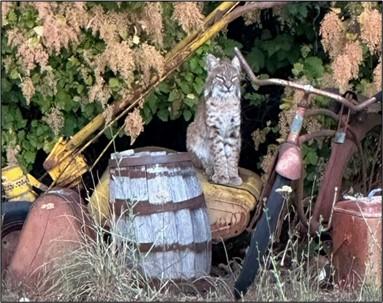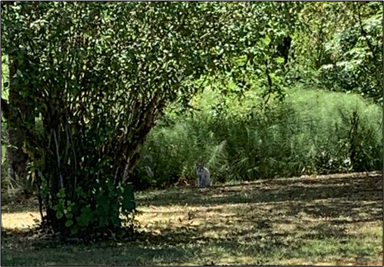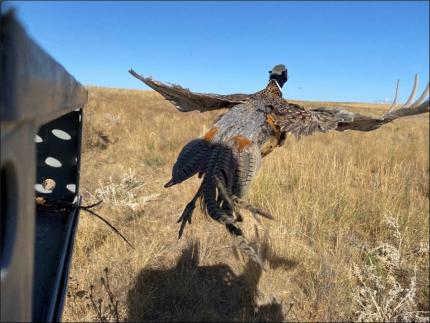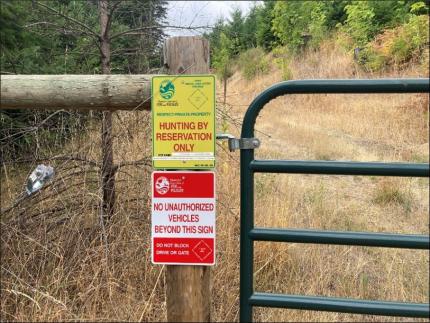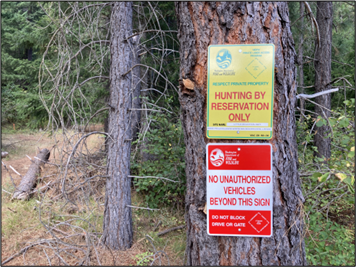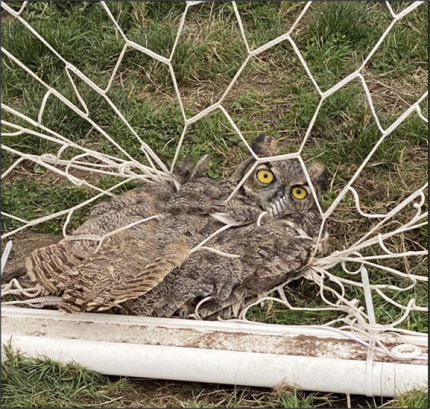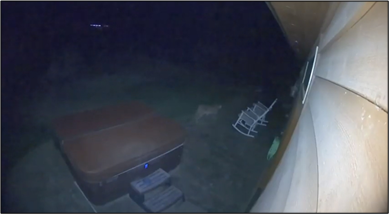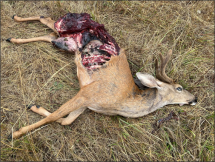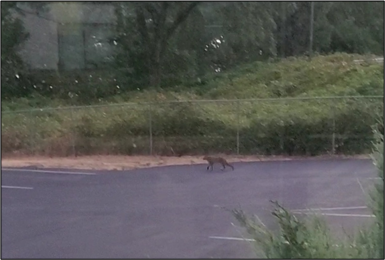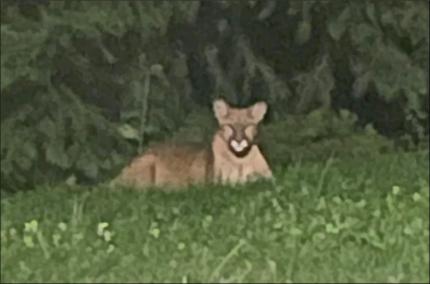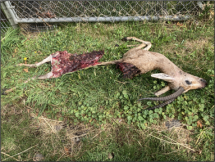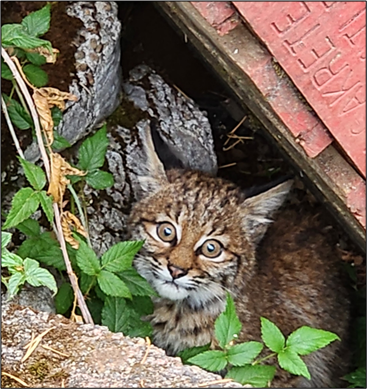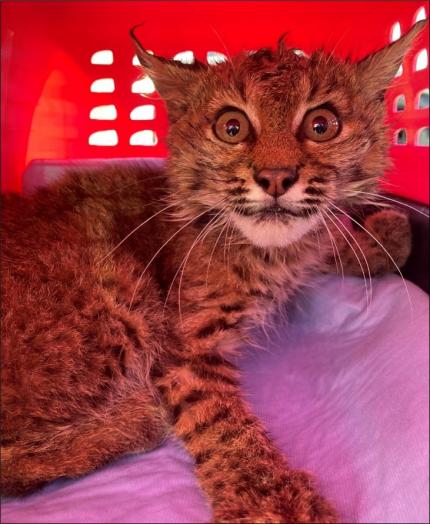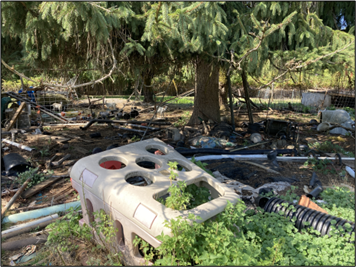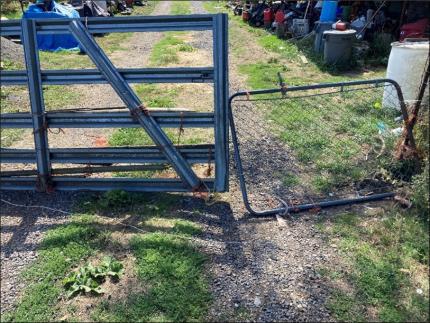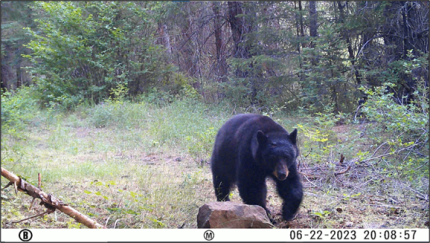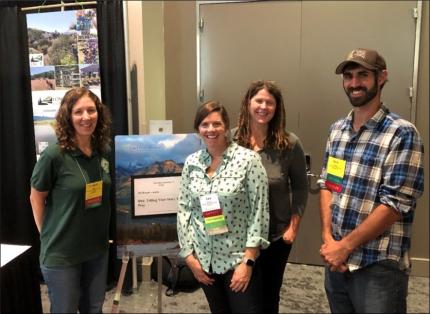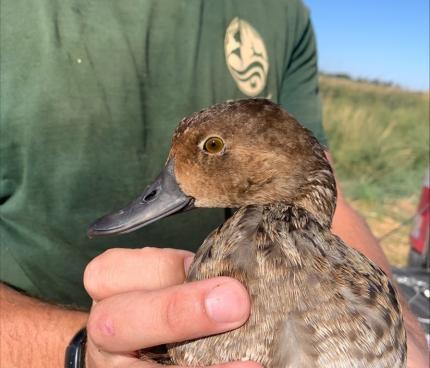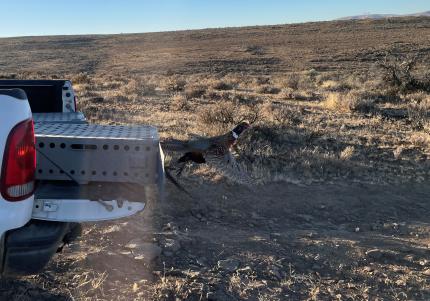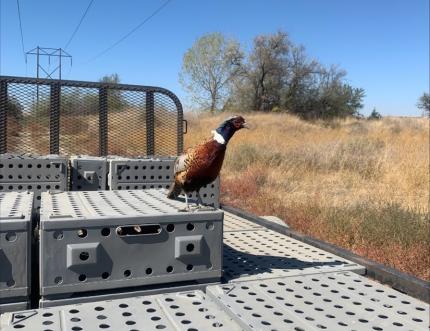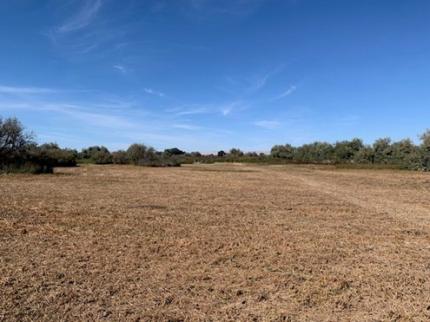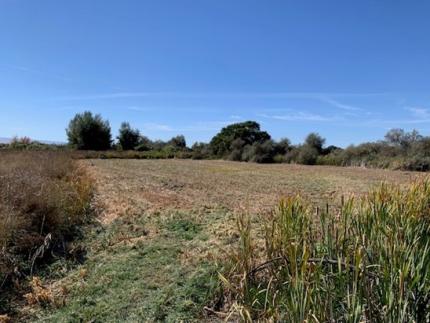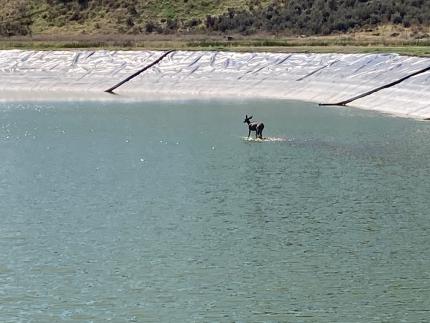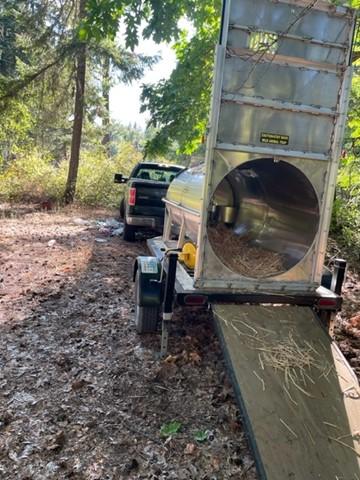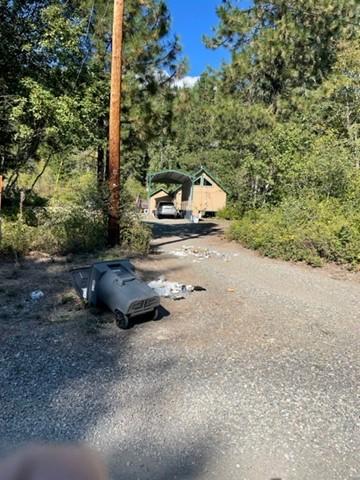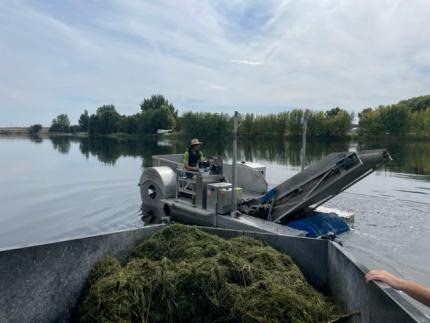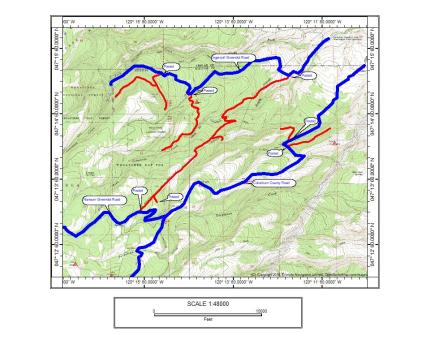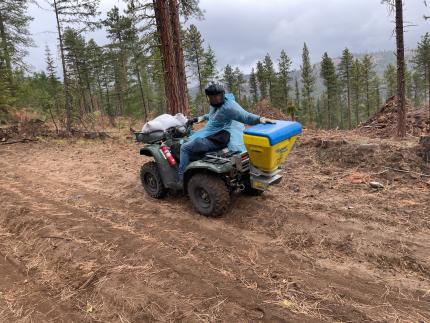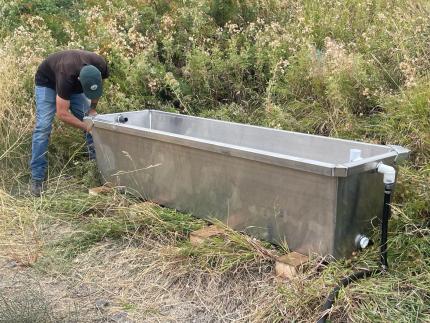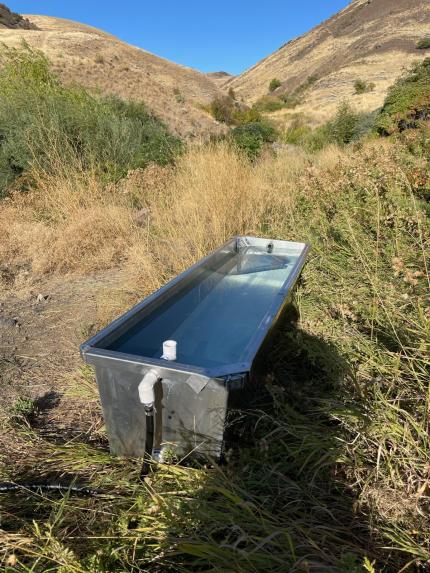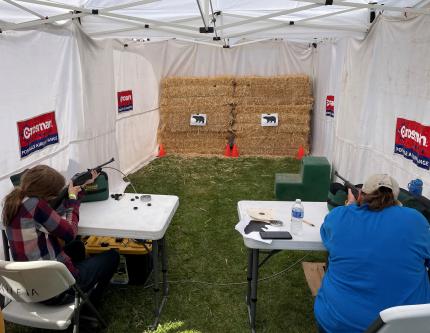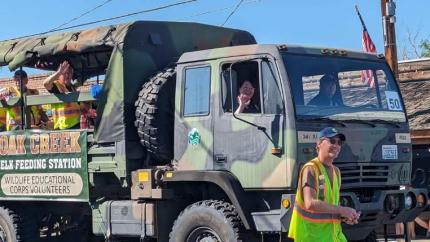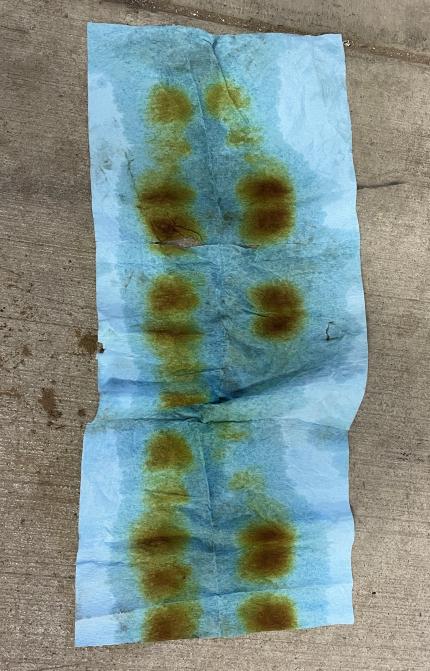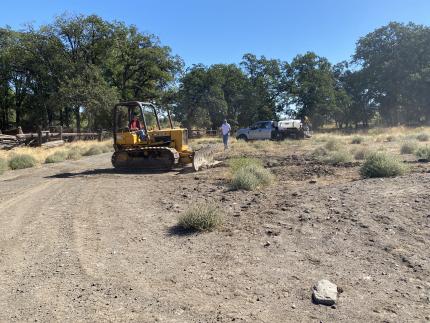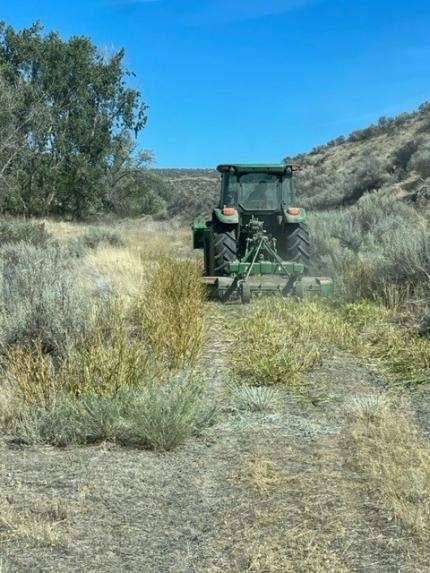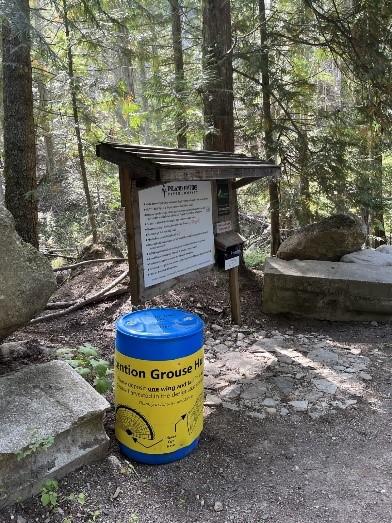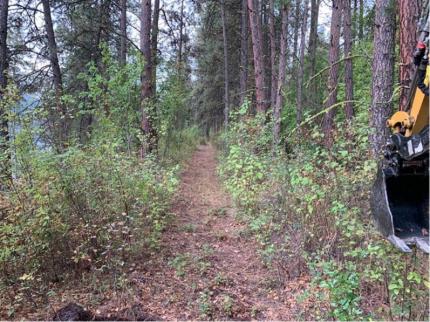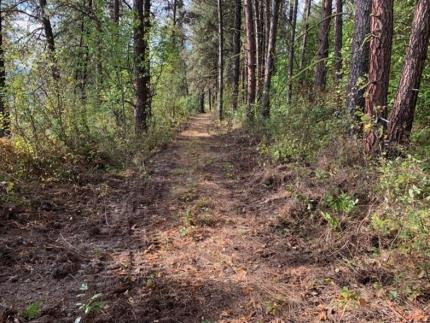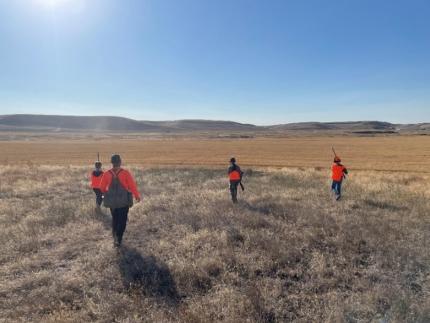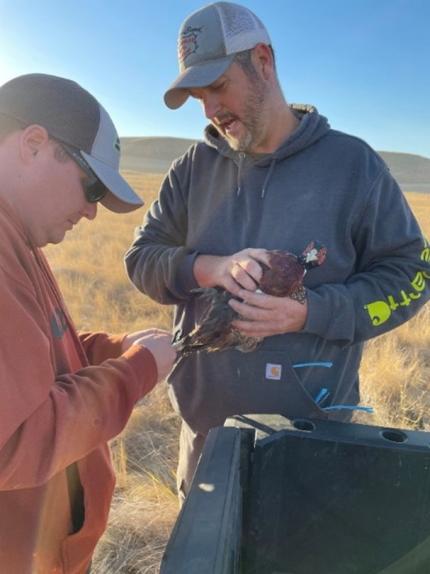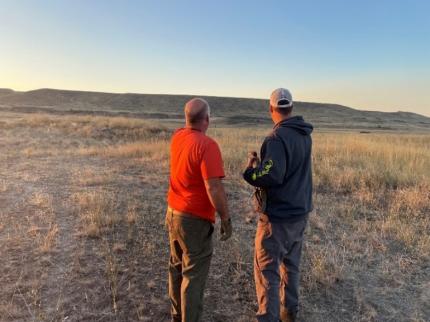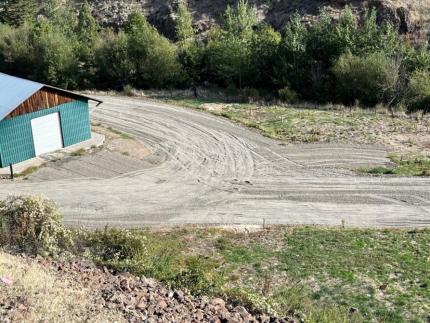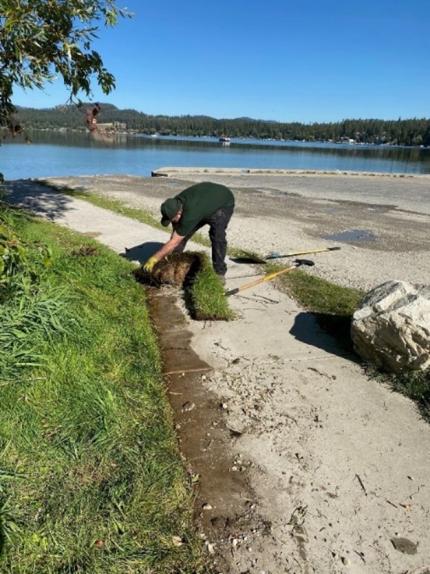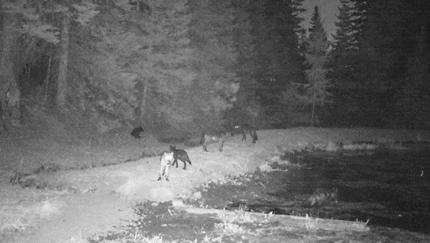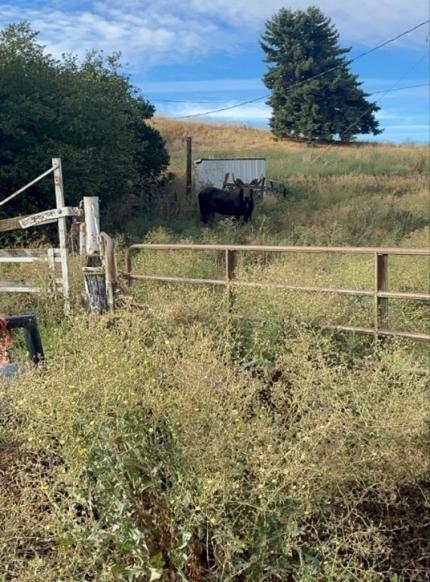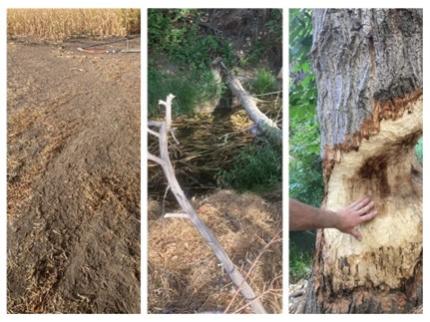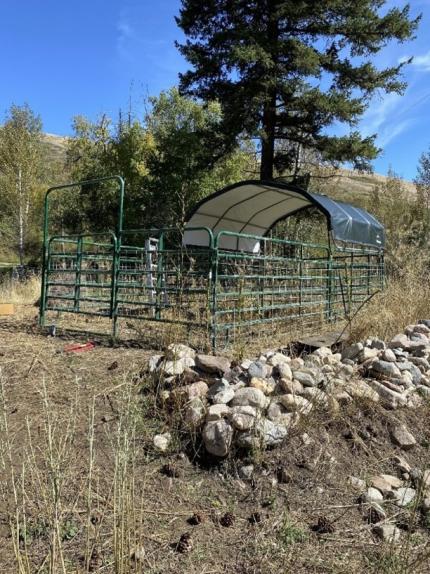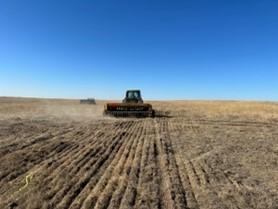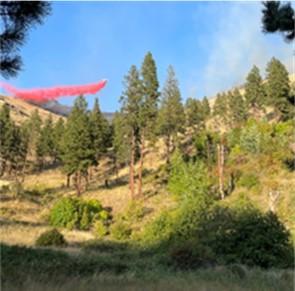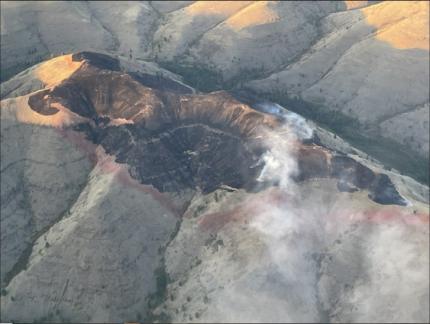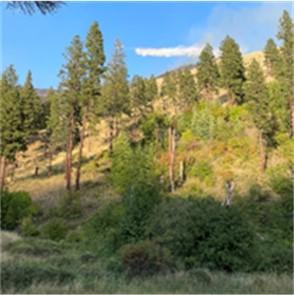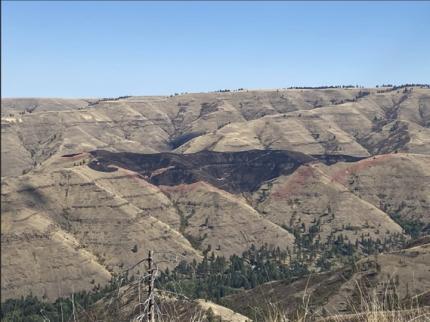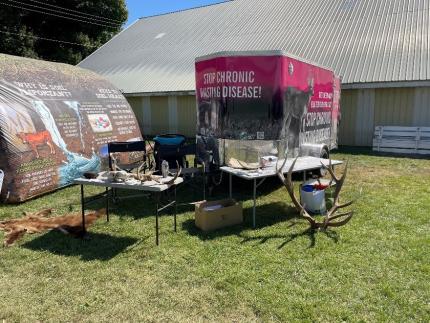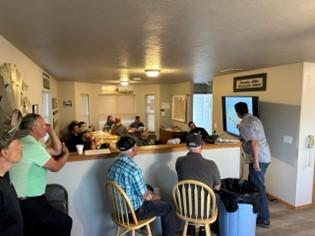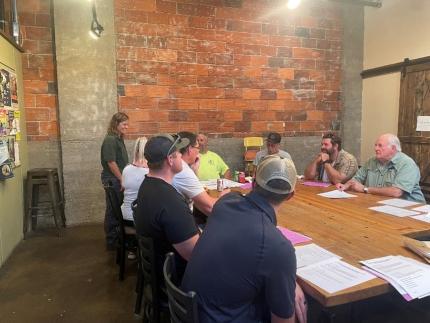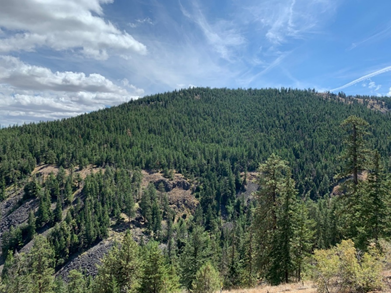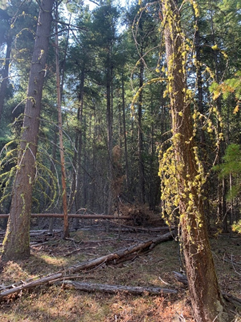Biweekly report Sept1-15 2024 - Region 5 (Southwest)
Managing Wildlife Populations
Grouse wing barrel and elk hoof bin deployment: Biologists Holman, Stephens, Ott, and Bergh, along with Cowlitz Wildlife Area Manager Vanderlip and Assistant Manager Steveson, deployed grouse wing barrels and elk hoof collection bins across the region in advance of archery elk and grouse opening days. With the collected grouse wings and tails, the species, age, and sex of each harvested grouse can be identified. These data will allow us to assess population trends for each grouse species and manage harvest accordingly. Please see our forest grouse wing collection webpage for details on collection and the locations of the barrels.
The collection of elk hooves is for the hoof disease incentive program designed to encourage the harvest of elk with hoof disease. All western Washington general season and most special permit hunters have a chance to enter an exclusive draw opportunity by submitting hooves that display signs of elk hoof disease. Please see our elk hoof disease webpage for details on the incentive program and the locations of the collection bins.
Northwestern Pond Turtle Unknown Shell Disease (USD) Treatment Trapping: With the help of volunteer members and several U.S. Fish and Wildlife (USFS) Columbia Gorge Scenic Area staff members, Biologists Bergh, Wickhem, and Ott trapped 24 northwestern pond turtles (NWPT). This was the first step in a biannual effort to treat USD, which is a major concern for Washington’s populations of northwestern pond turtles. While the disease is known to be fungal associated (Emydomyces testavorans), the cause of this disease is still unknown. In response, Washington Department of Fish and Wildlife (WDFW) monitoring efforts have been ongoing since 2012, which has included the treatment of mild to severe cases of USD in NWPT. Turtles captured for treatment receive CT scans to determine presence and severity of shell disease before being admitted to the Oregon Zoo and PAWS Wildlife Health Center. The turtles then head to Cedar Creek Corrections Center in Washington, part of the Sustainability in Prisons Project, to be cared for until healing is complete and the turtles are ready for release back into the wild.
During this trapping effort, WDFW biologists also assisted Dr. Hernandez-Gomez, Assistant Professor of Wildlife Disease Ecology from New Mexico State University, in sampling both NWPT and painted turtles for use in an immunogenetics study. This study evaluates the role of pathogen prevalence, environmental quality, and host genetics on the prevalence of USD in NWPT throughout Washington. The study is partially funded by WDFW’s new Wildlife Diversity Grant Program and will inform future management and recovery of the species.
Providing Recreation Opportunities
Kiosk Maintenance: Access staff members have seen an uptick of vandalism and abuse of sign kiosks at the Langsdorf Access Area in Vancouver. Most of the signage had been taken down. To help ensure that the signs stay where they belong, staff members placed several self-tapping screws along the border of each sign. In addition to the screws, bolts were strategically placed on each sign making it very difficult to remove without two people on either side to loosen the bolts. It may seem like overkill, but unfortunately it is necessary.
Abandoned Boat: With the increased traffic at the Langsdorf Access Area, there has been an uptick in litter and abandoned equipment. Access staff members found an abandoned boat beached on the bank opposite of the boat ramp. Wildlife Area and Access Area staff members are working together to coordinate with the tides to get the vessel out of the area and to the local dump.
Providing Conflict Prevention and Education
Bear Concerns 1: Wildlife Conflict Specialist Jacobsen fielded multiple reports over the course of a couple weeks of a small black bear wandering around the streets of White Salmon. Fortunately, the bear was not getting into any human attractants or causing problems other than eating from the occasional fruit tree. Jacobsen will continue to work with the Bingen-White Salmon Police Department to monitor the bear’s activity in the area.
Bear Concerns 2: Wildlife Conflict Specialist Jacobsen fielded a report from a landowner regarding a bear that had repeatedly attempted to enter his residence. The landowner would wash his front door daily and come home to find fresh muddy bear prints on the door near the door handle. Jacobsen and Officer Hughes had previously attempted to trap the bear last month after the bear entered the residence, raided the pantry, and killed the landowner’s cat. The bear did not show up while the trap had been set. Officer Hughes set the trap again at the residence.
Bear Concerns 3: A landowner contacted Wildlife Conflict Specialist Jacobsen to report a large black bear consuming fruit from his fruit trees and damaging the branches. Jacobsen explained that this was natural behavior for a bear but suggested that the landowner could erect electric fencing around his small orchard if he was insistent on keeping the bear out of the area. The landowner plans to construct an electric fence for next season.
Bear Concerns 4: Wildlife Conflict Specialist Jacobsen handled a complaint regarding a black bear that repeatedly approached a landowner while she was working in her vineyard. On one occasion, the bear pursued the landowner’s dogs that were harassing the bear. Jacobsen provided advice as well as options for handling the conflict. The landowner decided to attempt to hunt the bear using their valid bear tag during the current, open bear season.
Wolf Sightings: Wildlife Conflict Specialist Jacobsen received multiple reports of a collared wolf wandering through pastures in central Klickitat County. Jacobsen was aware of the wolf and the reports of the wolf’s activity align with the data received from the wolf’s satellite GPS collar. The lone male wolf dispersed from the Lake Chelan area in the spring of 2024 and made its way down the Cascades, arriving in Klickitat County around early April. Jacobsen has been working closely with livestock producers in the area to prevent wolf-livestock conflicts.
Cougar Depredation on Goat: A property manager contacted Wildlife Conflict Specialist Jacobsen after one of their goats went missing from the property. The goats are locked in a barn each night, but this goat disappeared in the middle of the day from a small, chain-link paddock while facility employees were nearby. Jacobsen responded to the scene but was unable to locate the goat. Jacobsen found muddy paw prints on the top of the fence and later, goat hair stuck to a log near a culvert. Based on this information, Jacobsen contacted a houndsman to help search the area for a cougar. An adult male cougar was located approximately 150 yards away. Jacobsen euthanized the cougar and necropsy of the cougar’s stomach revealed that the cougar had eaten a goat.
Cougar Depredation on Unsecured Alpaca: Wildlife Conflict Specialist Jacobsen and Biologist Ott responded to a residence where a cougar had reportedly killed an alpaca. Although the landowner reported the incident two days after it happened, Jacobsen and Biologist Ott were still able to confirm that a cougar was responsible for the depredation. According to the landowner, the cougar was observed chasing another alpaca the night after the first alpaca was killed. As is the case in most livestock depredations, the landowner’s alpacas had been left out at night to graze unsecured in the partially wooded pasture. The landowner agreed to begin locking their remaining alpacas up at night to help prevent future depredations.
Mistaken Identity: A landowner contacted Wildlife Conflict Specialist Jacobsen regarding what he believed to be a bobcat or a juvenile cougar that he captured on his doorbell camera. Upon reviewing the footage, Jacobsen was able to reassure the landowner that the feline in question was a domestic housecat. It is common for landowners with doorbell cameras to report domestic cats as cougars given the wide-angle nature of most of these camera lenses and the subsequent distortion of the animal’s size. However, closer inspection of body morphology and size relative to other objects in the camera’s frame can help clear up these cases of mistaken identity.
Coyote Depredation on Domestic Dog: Wildlife Conflict Specialist Jacobsen was contacted by an urban Clark County resident regarding a depredation on one of his domestic dogs. Based on the location and description of the attack, Jacobsen believed that coyotes were responsible for the depredation. Jacobsen provided advice to the reporting party.
Rattlesnake Capture: Wildlife Conflict Specialist Jacobsen was again contacted by the same landowner along the Klickitat River who reported a rattlesnake in her garage a couple of weeks prior. This time, the landowner had another juvenile rattlesnake along her garage. Jacobsen stopped by the residence on his way out of town and moved the young snake to the other side of the landowner’s large property. The landowner was thankful for the assistance.
Injured Deer 1: Wildlife Conflict Specialist Jacobsen responded to a report of an injured deer in an urban neighborhood. Jacobsen located the deer and determined that the deer had a severely broken back leg as well as a likely infection with severe diarrhea. The deer was in poor overall body condition and needed to be euthanized. The deer had taken shelter under a large porch where the conditions were not conducive for Jacobsen to safely euthanize the animal. Jacobsen chemically immobilized the young deer using a dart gun and removed the deer from under the porch where he could then safely euthanize it.
Injured Deer 2: On the same day that Wildlife Conflict Specialist Jacobsen responded to the injured deer under the porch, Jacobsen received another report of an injured deer in the ditch at a busy Clark County intersection. Jacobsen contacted the Clark County Sheriff’s Department with traffic control assistance. Jacobsen was able to safely euthanize the deer on the side of the road. According to the Sheriff’s Department, that was the third deer that day that had been hit by a car and needed to be euthanized at that same intersection. The Sheriff’s Department had handled the previous two injured deer calls there earlier that day.
Injured Deer 3: Wildlife Conflict Specialist Jacobsen was contacted by a landowner regarding what she believed to be an injured deer laying up against her house. After assessing the footage of the deer and its overall body condition, Jacobsen believed that the deer was healthy and just resting. Jacobsen couldn’t resist including a picture of this beautiful, mature, healthy black-tailed buck in his report.
Elk in Orchard: A landowner contacted Wildlife Conflict Specialist Jacobsen to complain about a group of elk in her non-commercial apple and pear orchard that were damaging her trees. Jacobsen loaned the landowner some Fox Lights as well as an inflatable waving tube deterrent to help keep the elk at bay for the next few weeks.
Elk in Hay: A landowner contacted Wildlife Conflict Specialist Jacobsen to discuss elk damage to his hay pasture. Jacobsen will meet with the landowner soon to renew his Damage Prevention Cooperative Agreement.
Deer Damage to Vineyard: Wildlife Conflict Specialist Jacobsen met with a vineyard manager to discuss deer damage to the grape vines in the vineyard. While there, Jacobsen observed a female deer and her fawn browsing on the vines. The manager had made a concerted effort to enclose the vineyard in temporary, plastic deer fencing but the deer still regularly manage to find a way into the vineyard. Jacobsen will work with the landowner on cooperative cost-share fencing project options for the vineyard.
Providing Education and Outreach
Wahkiakum Outdoors Blacktailed Deer Presentation: Biologist Holman gave a presentation titled “WDFW Black-tailed Deer Management in Southwest Washington” to approximately 25 members of the public in Cathlamet. The presentation featured a discussion of WDFW management strategies for black-tailed deer, population status, basics of black-tailed deer biology and ecology, such as breeding, birth, feeding and death; common deer diseases, as well as WDFW research past and present. Wahkiakum Outdoors regularly brings speakers on various outdoor and natural resource topics to the community.


















































